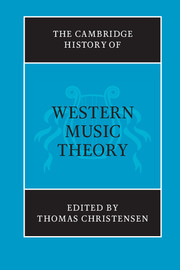Book contents
27 - Music and rhetoric
from A - Models of music analysis
Published online by Cambridge University Press: 28 March 2008
Summary
Rhetoric is the original metalanguage of discourse in the West. From the fifth century BCE until around 1800 it served the educated classes as the most prestigious and influential means of conceptualizing and organizing language, and articulating how it can best be effective, persuasive, and elegant. Given that rhetoric shares with music the structured unfolding of sound in time, aspects of performance and delivery, and even a rudimentary notion of the “work” (the oration in rhetoric, the composition in music), it was natural and even inevitable that analogies would be drawn between the two. Analogies between rhetoric and music were common even in antiquity: Quintilian, for example, pointed to the expressivity of music as a model for the orator. In later times it was rhetoric that more frequently served as a model for musicians. Although musico-rhetorical analogies occurred sporadically in the music theory of the medieval period, they began to play a more extensive role only in the sixteenth century, when musicians appropriated rhetoric, by then a central element in the humanistic education of the time, as a model for the teaching of musical composition. It was the theorists of a uniquely German musico-rhetorical tradition who imported the apparatus of rhetoric directly into music theory, in effect making it a metalanguage for music as well as for language by interpreting it as a model for musical composition. What distinguished this German effort in the long history of the interaction between rhetoric and music was precisely that it went beyond the mere drawing of analogies to a thoroughgoing attribution of specific musical substance to rhetorical terms and concepts.
- Type
- Chapter
- Information
- The Cambridge History of Western Music Theory , pp. 845 - 879Publisher: Cambridge University PressPrint publication year: 2002
References
- 6
- Cited by

